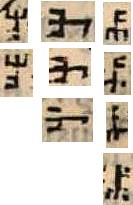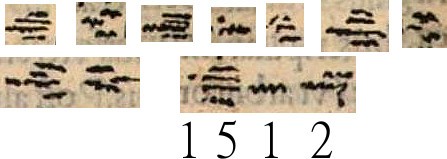While responding to Cipher Mysteries comments from the ever-interesting Byron Deveson and others today, it struck me that what we are broadly iterating towards is a kind of “open source autopsy” of the Tamam Shud / Unknown / Somerton Man. And so, my reasoning went, why not take this basic idea and really do it properly?
In short, I propose that we carry out an open source autopsy on the Unknown Man. The point of the exercise would not be to do with whether you think, believe or suspect he was a spy, a paramour, a horse doper, a car thief or whatever, but with the unassailable basic factuality his physical body tells us about what happened to him (pre- and post-mortem) in the period up to the morning of 1st December 1948.
For me, a grain of fact outweighs a ton of speculation: and I believe that by collaborating to dig out all the grains of fact we can here, we will be able to reach a position where we can build up a powerful and convincing story about what happened. Not only that, but by collecting, exposing, and validating all the physical evidence, any conclusions or inferences will be openly accessible and verifiable by all manner of modern forensic professionals.
The first step in this journey of a thousand miles, though, is evidence collection. Frankly, I’m getting a bit tired of re-reading abbreviated summaries in 60-year-old Australian newspapers about the various autopsies, coronial inquests, and pathology reports. For example, Kerry Greenwood’s recent book (I’m waiting for my copy to arrive, any day now, *sigh*) quotes John Dwyer’s pathology notes, but having direct access to these notes is surely a better place to start.
I surely can’t be the only researcher who wants to go through these reports first-hand!
So, my current list of evidence sources we would need to begin with would look something like this:-
* Dr John Berkely Bennett’s autopsy report [examined the body at 9.30am on 1st December 1948]
* Dr John Matthew Dwyer’s pathology report [carried out the post-mortem at 7:30am on 2nd December 1948]
* Dr Robert Cowan’s report [stomach, stomach contents, a liver section, a muscle section, blood and urine]
* Dr Kenneth A. Brown’s forensic odontology report [he surely wrote and submitted a report, right?]
* The coronial inquest transcript / report [“Inquest Into the Death of a Body Located at Somerton on 1st December 1948, State Records of South Australia, GX/0A/0000/1016/0B, 17th & 21st June 1949”]
* The raw data collected from what is believed to be the Unknown Man’s hair by Professor Derek Abbott’s group.
Note that I’m not interested in the police reports or in any individual claims or narratives at this stage, but only in raw physical evidence. Is there anything missing from this list? Please leave a comment if there is!
Of course, there may be particular reasons why some or all of these can’t be openly published on the Internet. But all the same, I think we should be able to publish detailed summaries of all of the physical evidence and conclusions, not just the edited highlights that prove useful to reinforce some speculative or moral narrative.
To stand any chance of making any headway, I think we need to start with the whole physical story in all its confusing, contradictory detail – because the body itself can’t speculate or lie. Is that too much to ask for?





